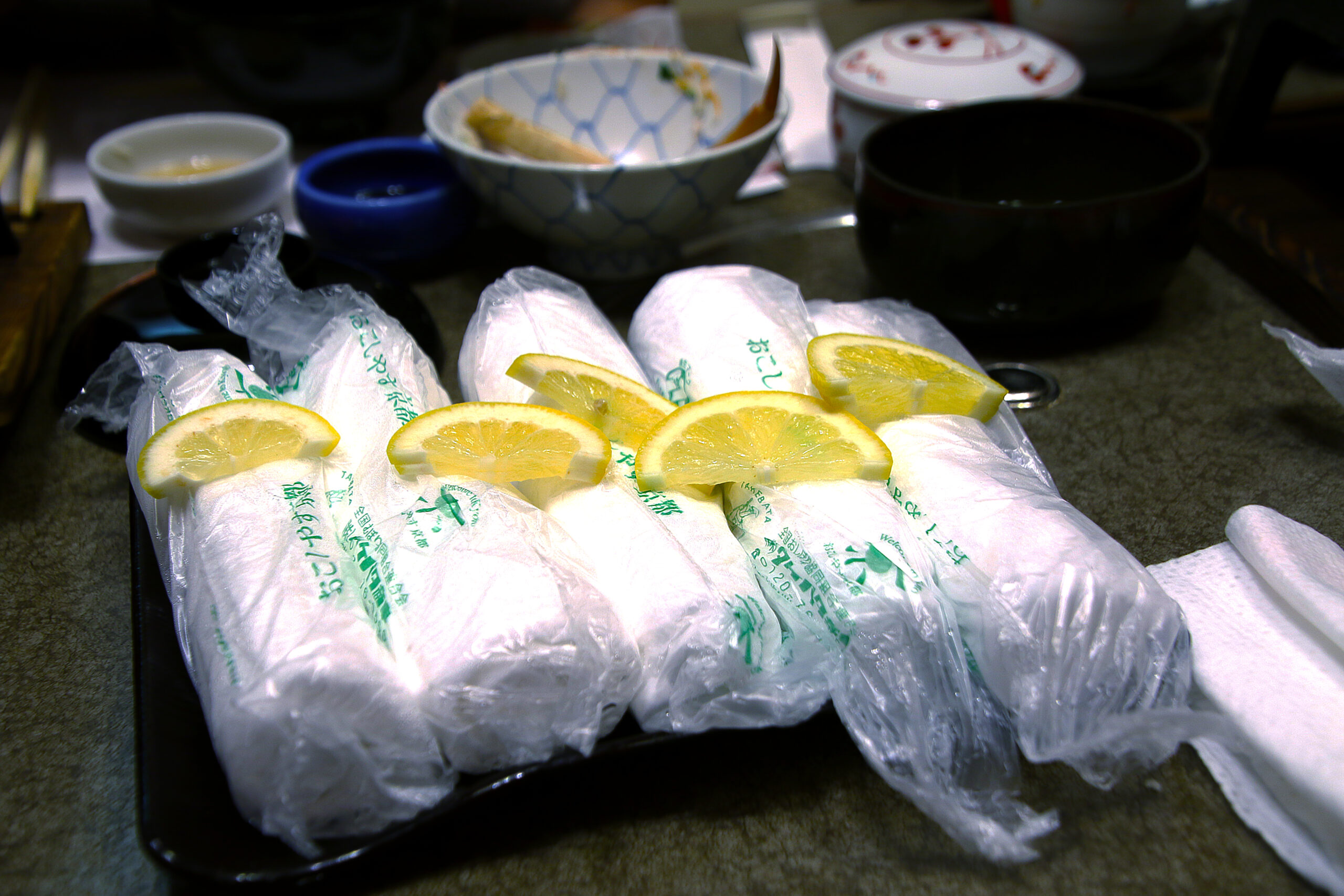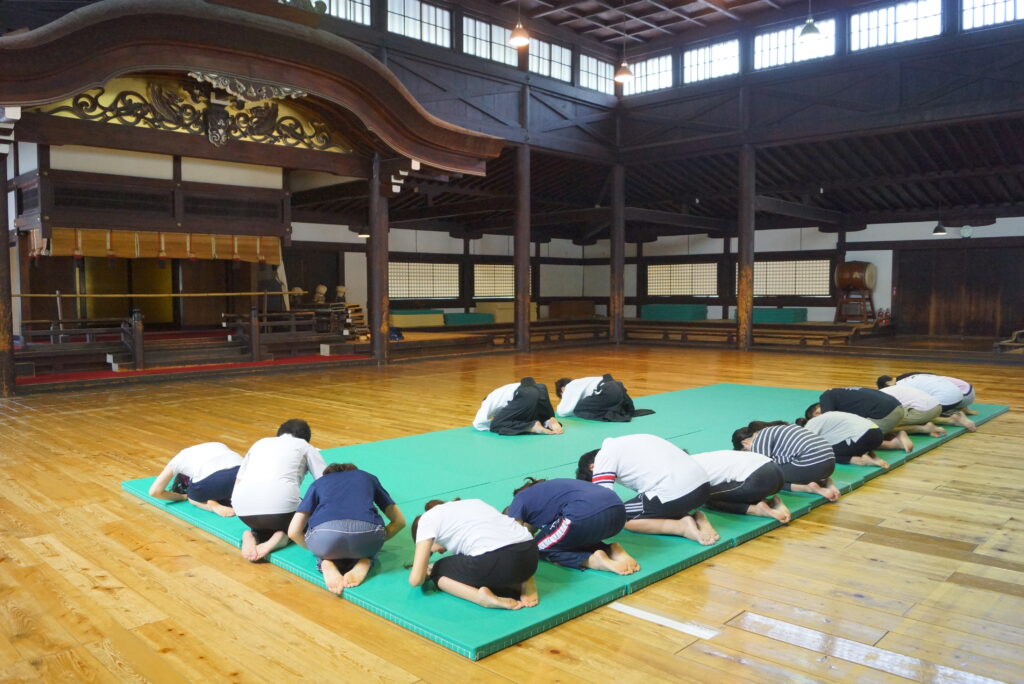Something we love about traveling is having the opportunity to explore different cultures. Different foods, different languages (and ways of expressing yourself), different ways of living and of behaving. Yes, people are mostly the same the world over, but there are countless small differences that are culture-specific, and it’s these differences that make our world more interesting.
A small thing we love in Japan is the custom of providing customers with a small wet towel before (and sometimes after) a meal. In a good (or even medium-rank) restaurant this will be made from cotton, and quite substantial. In a cheaper place it will be moist paper, and probably sealed in a plastic packet. These towels are called oshibori, and in cooler weather they will be warm or hot, while in summertime they are likely to be cold. They are meant for cleaning your hands (not your face, though on a hot and sticky day we confess to having done so, and we have certainly observed many Japanese doing the same!), and the practice has spread to other countries (as well as in-flight services, especially on Asian airlines).
Like taking your shoes off when you enter a home, the oshibori seems to us like a Japanese cultural practice that should be adopted everywhere.
But today we want to write about a different Japanese cultural practice: bowing. We’re not going to cover bowing in detail (for Japanese it’s a big subject, with a lot of nuance), but just want to share a brief story.
This summer we visited a friend in Denmark who was in training to run his first half marathon. During our visit, we were watching the World Athletics Championships on television, and saw a Japanese marathon runner cross the finish line, then turn around and bow to the course.
Our friend said, “Wait, what was that?”
We explained that Japan’s Shinto religion holds that God (or gods) inhabit all beings, including mountains, rivers, trees and other natural features. A bow after completing a marathon is a show of respect for the gods who were along the course and were a part of the event. You can see baseball players bowing after they leave the field, and during the Olympics, you may have seen Japanese athletes in dozens of sports bowing to the field, or court, or course (you may remember having seen golfer Hideyuki Matsuyama’s caddie bowing to the Augusta National golf course after they won the Masters Tournament last year), or ring.
Our friend listened, then said, “I love that. I’m going to start to do that.”
Last week he finished his first half marathon, and posted two photos: in the first, he’s crossing the finish line (he came third!); in the second, he has turned around and is bowing deeply to the course.
Respect.






